
Rejuvination: first drive in the new Audi RS e-tron GT
The term ‘facelift’ doesn’t really apply to the new e-tron GT, as little has changed on the actual face of the car. You have to be an expert to tell the difference between the facelift and its predecessor at first glance. But that’s not a bad thing, because the first GT was already a forbiddingly good-looking vehicle. Nevertheless, a lot has changed under the bonnet, or more precisely in the underbody. We’ll look at the technology in a moment, but first, we’ll take a detour into the interior.
Here, too, little has changed in the directly visible area. The seats are still excellent (which also applies to their integrated massage function, which vigorously kneads the driver and front passenger). Thanks to ventilation and cooling, you never freeze or sweat and the high centre console continues to create the cosy feeling of being one with the vehicle.
Unfortunately, the disadvantages have also remained: The centre tunnel filled with battery technology significantly restricts the space available in the middle seat. Thanks to the 40:20:40 folding rear seat, it is possible to use the centre seat as storage space – for example, the skis for the whole family can easily fit in here. Nothing has changed in the boot and frunk either; the car is clearly designed for driving pleasure and not for luggage.
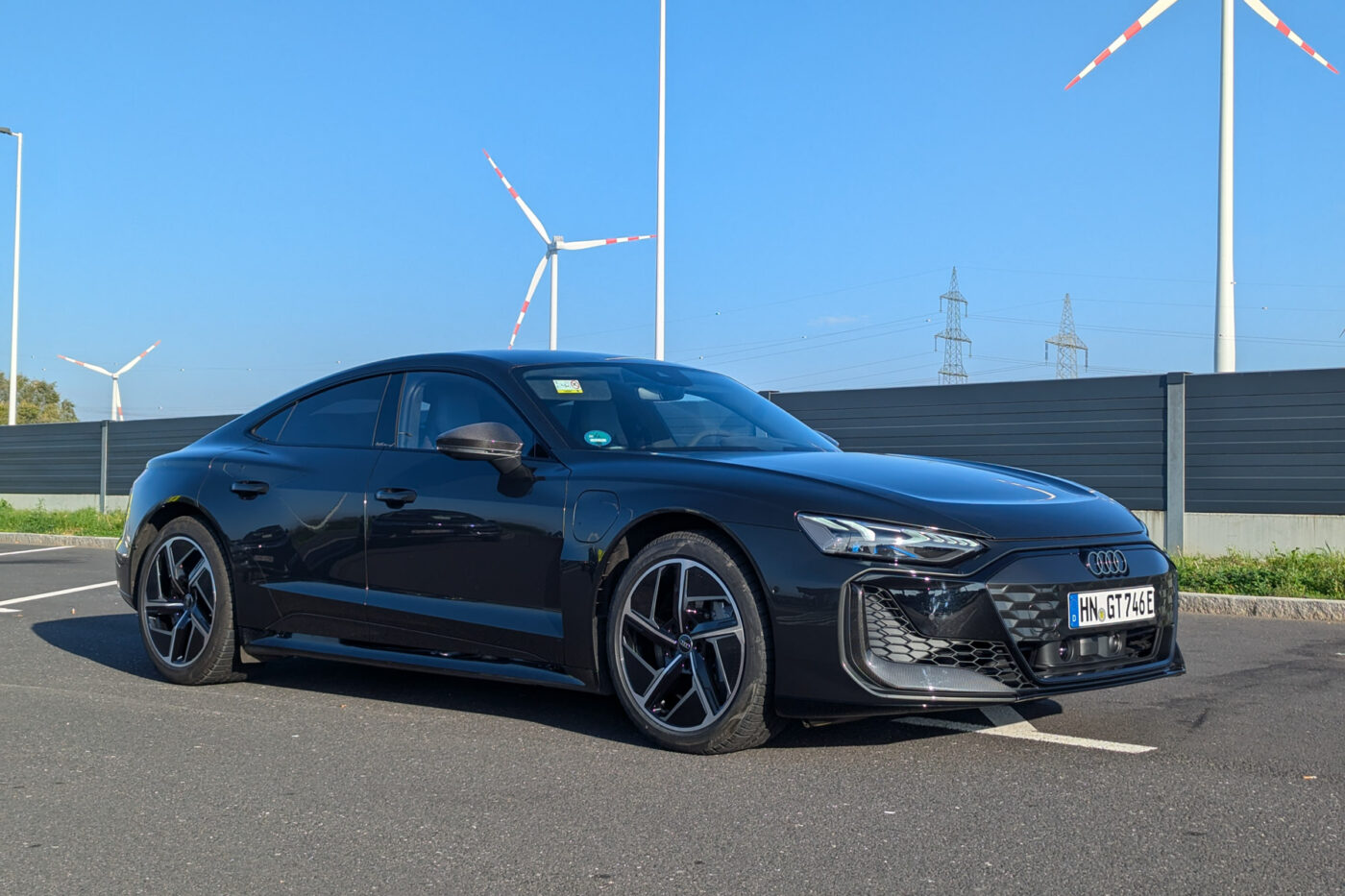

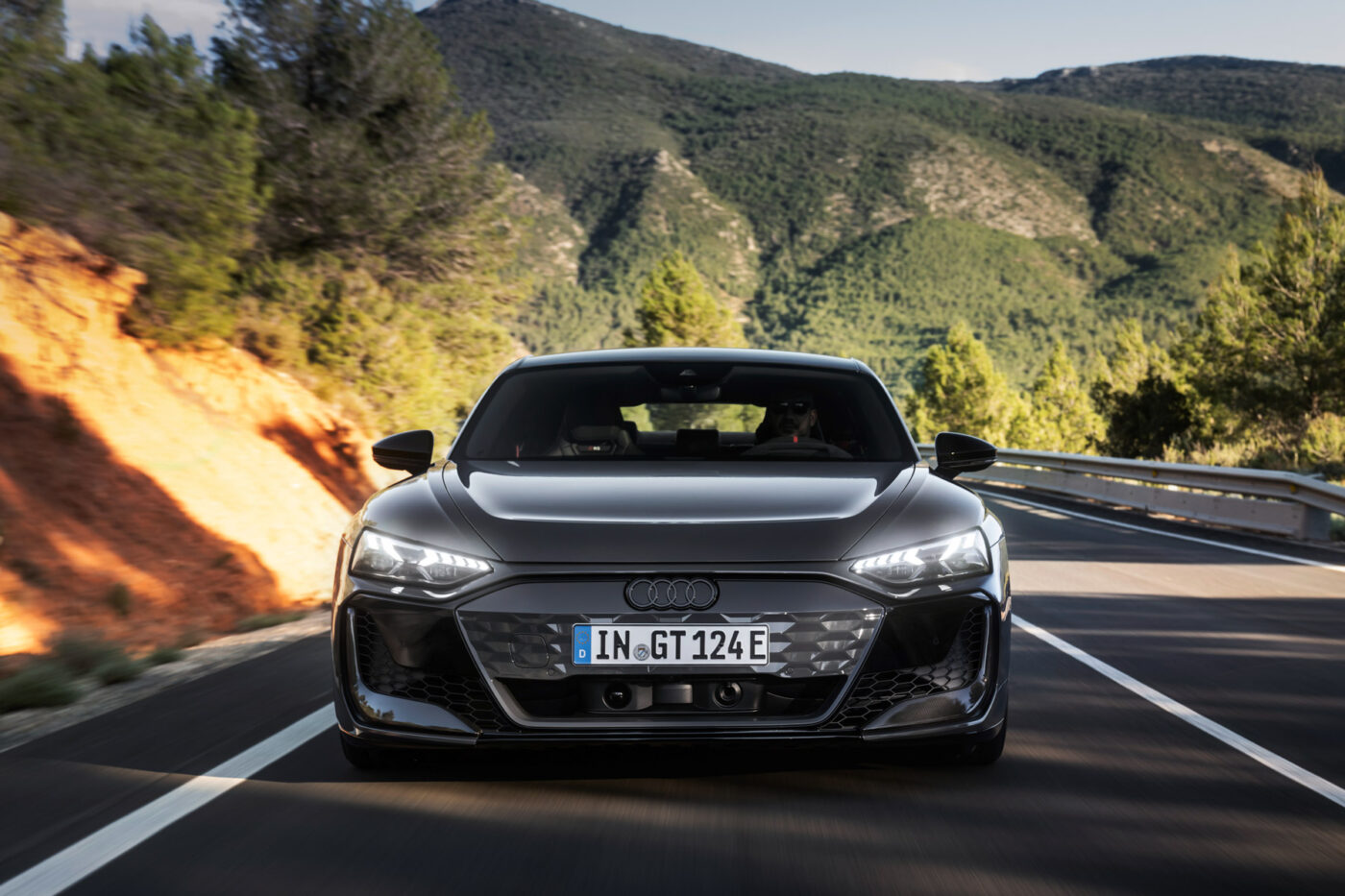
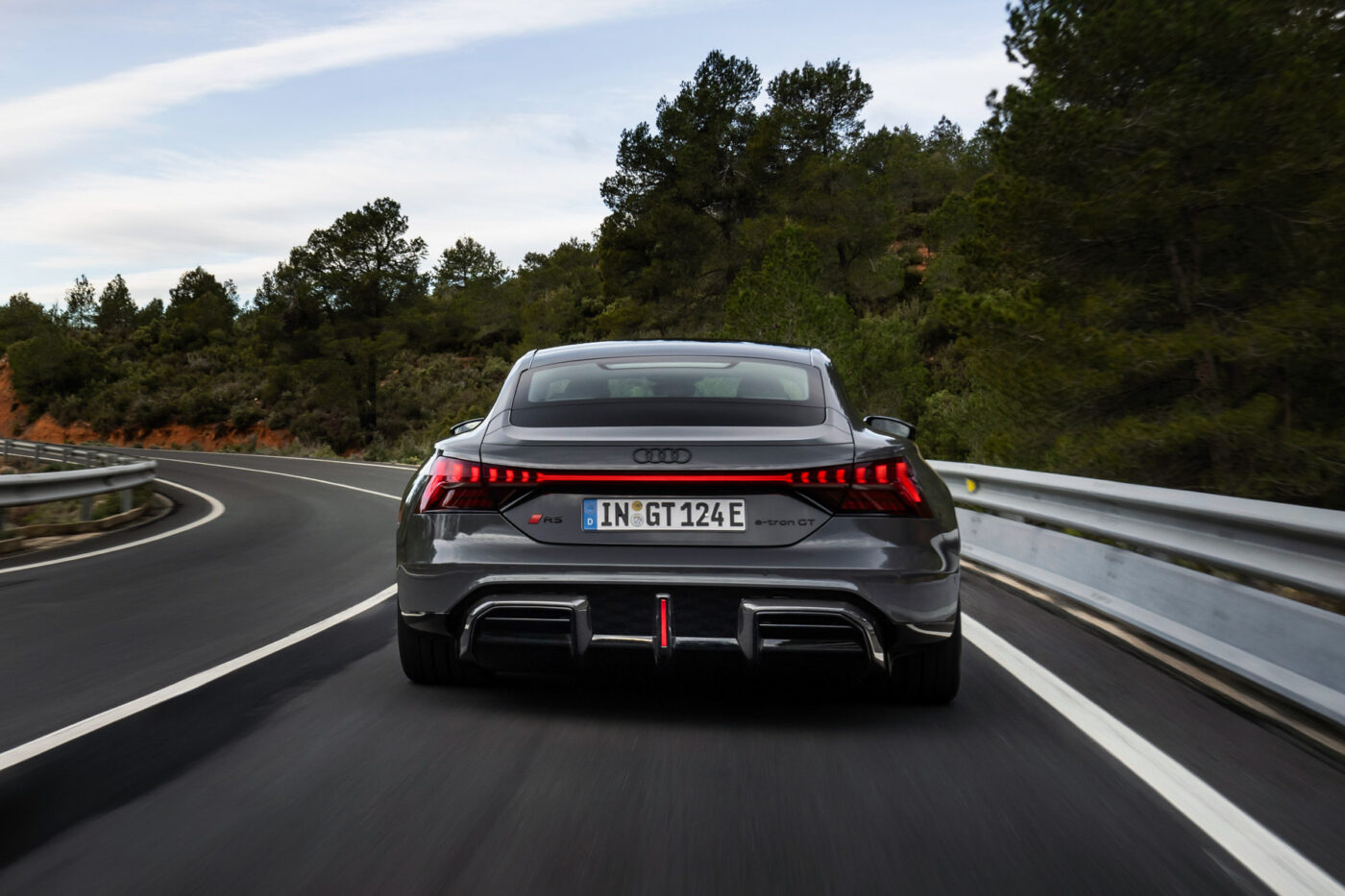
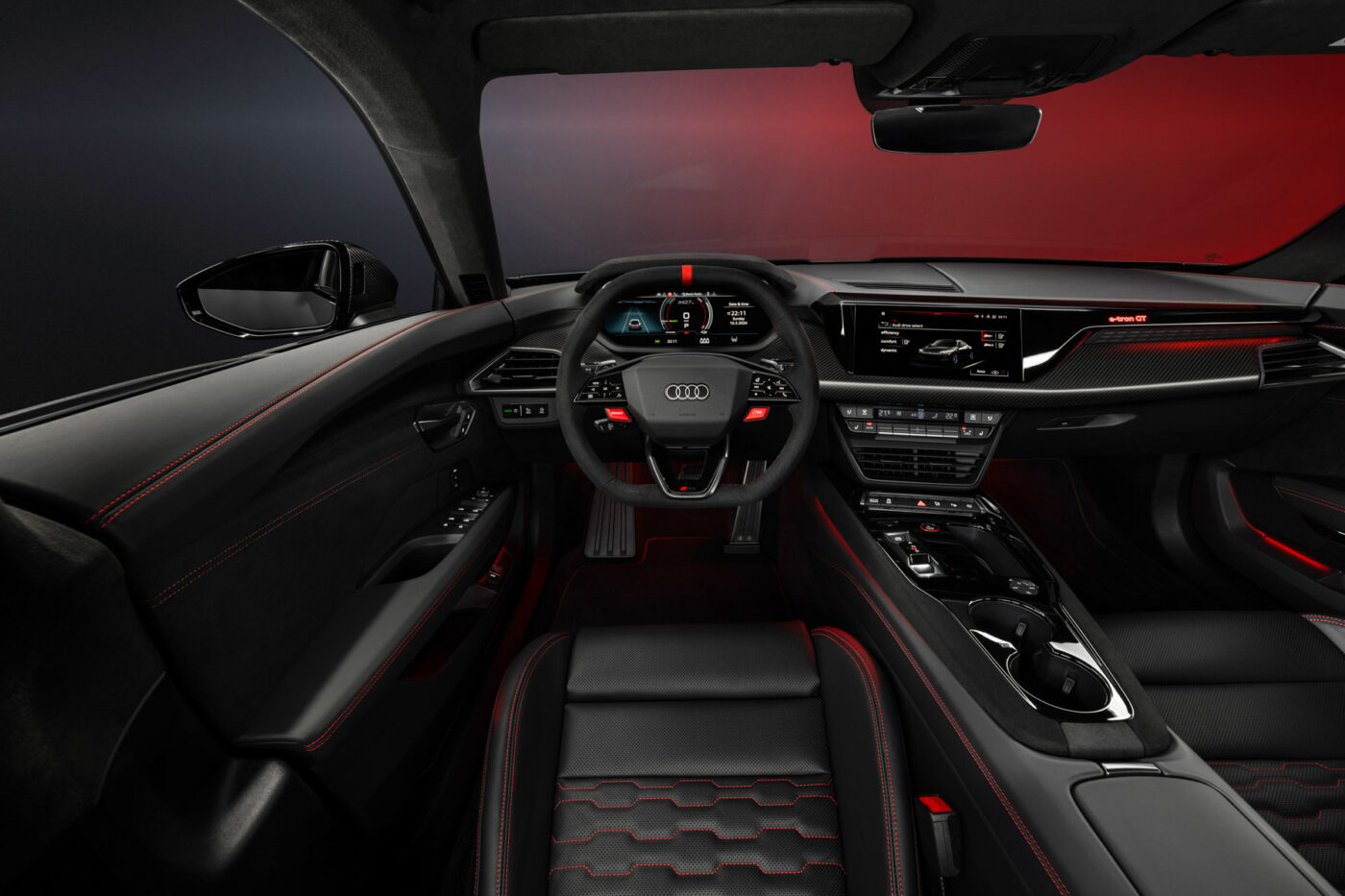
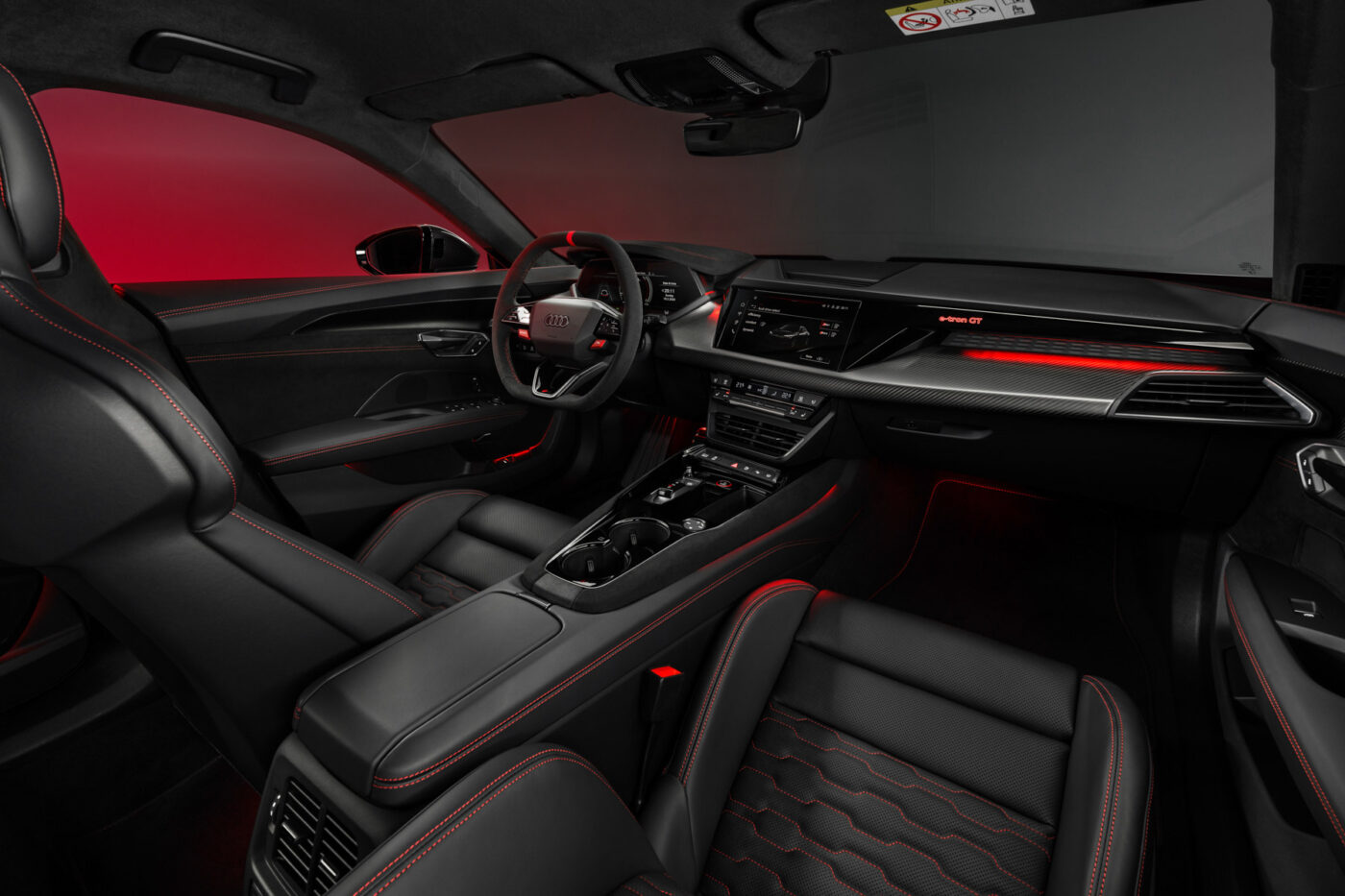
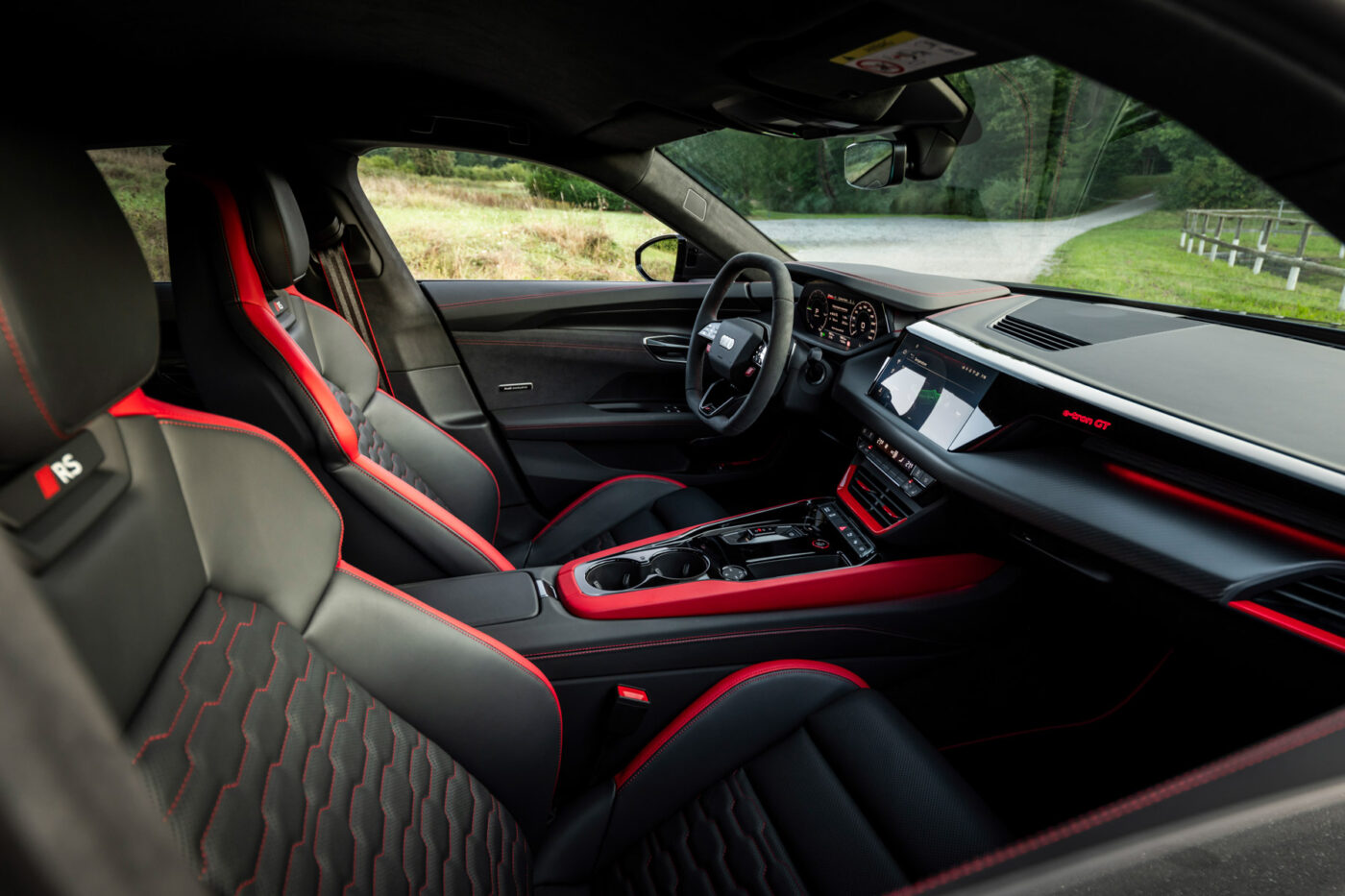
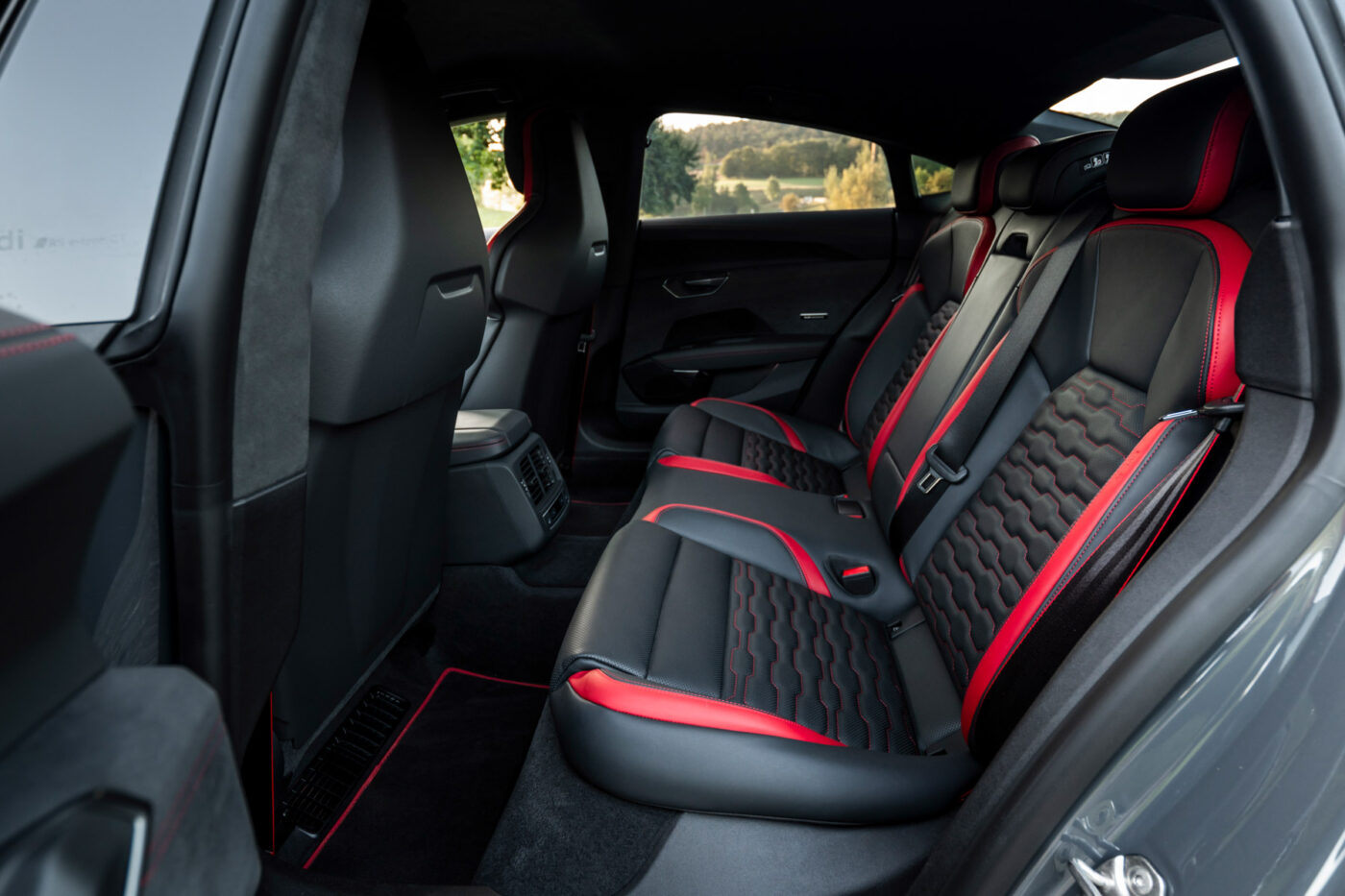
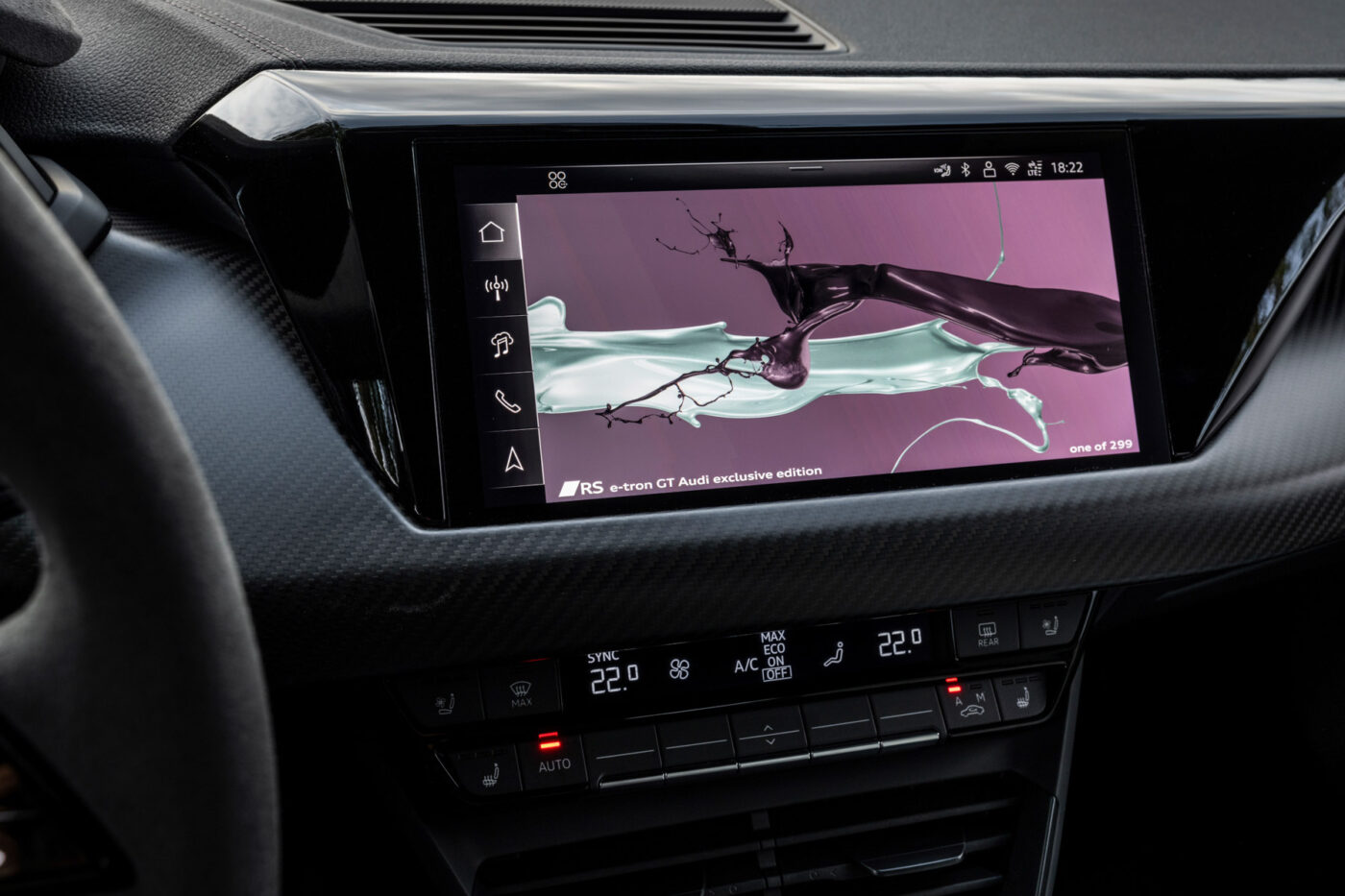
The jagged dashboard remains a matter of taste, but at least it shines with plenty of USB-C ports so that every mobile phone really does get enough juice. What also shines are the glossy surfaces, which, unfortunately, no car manufacturer is really getting away from at the moment. The ubiquitous fingerprints put a slight damper on the quality of the otherwise tiptop interior.
Instead of high-tech touch controls for the air conditioning system, Audi continues to rely on classic controls with buttons and manual air vents, which are pleasantly intuitive and uncomplicated to operate. It doesn’t always have to be technology overkill; sometimes a tried and tested classic solution is better.
Of course, the new GT edition also includes an exclusive special edition. The aptly named ‘exclusive’ variant comes with its own colours, its own floor mats, special paintwork, lots of carbon, extra ambient lighting and lots of ‘exclusive’ badges so that nobody can overlook how exclusive the car is. If electric cars weren’t individual enough for you before, you may now find your ‘perfect match’ here.
A chassis masterpiece
The first e-tron GT was already a great driving machine, especially as an RS. However, the facelift takes driving pleasure to a whole new level. The suspension developed by Porsche now manages the balancing act between sportiness and comfort even better. Depending on the selected mode, it is either firm and direct or comfortable and yet still supreme.
In any position, the e-tron GT sticks to the road like a board, never lets itself be rattled and yet is always agile. A new feature is the lift function, thanks to which the car rises (or rather bounces) at lightning speed when a door is opened, making it easier to get into the flat flounder. The driving modes can be set in detail, and two individual driving programmes can be selected via the RS button. Symmetrical to the RS button is the boost button on the steering wheel, also bright red in colour. One press of the button delivers an extra 70 kW for ten seconds and thus even more punch when accelerating.
Steers front and rear
In city traffic, the car feels as manoeuvrable as a small car thanks to the now even more cooperative rear-axle steering; no bend is too tight, and no car park is too winding. Despite being five metres long, it is a delight to whizz along narrow alleyways in the e-tron GT.
The artificial sound usually remains pleasantly discreet and blends harmoniously into the driving experience, but the spacey ‘Electric Sport Sound’ in the Porsche Taycan still impressed us more.
Thanks to the drive power of up to 680 kW in the top-of-the-range model with the unwieldy name ‘RS e-tron GT Performance,’ a spirited step on the electric pedal now catapults the car from 0 to 100 kph in a brisk 2.5 seconds. However, the really high speeds have been left to Porsche; Audi’s top-of-the-range model also stops at 250 kph.
Fast driving and even faster charging
At first glance, little has changed in terms of charging, as 20 kW more charging power doesn’t seem like much at first. However, the charging curve has actually been significantly improved, and thermal stability has increased so that full charging power is now available from just 15 degrees Celsius. Ten to 80 per cent is completed in 18 minutes – reproducible, stable and in a wide temperature range.
When preparing for charging, a power forecast provides support, permanently displaying the charging power the battery could accept if a charging process were started at the current time. Values of over 200 kW are displayed impressively early and for a long time, even if no route planning with a charging stop is active. In this way, Audi removes a significant uncertainty from the driver, making fast charging fun! As soon as a charging station is targeted and preconditioning starts, it only takes a few minutes for the display to crack 300 kW.
| S e-tron GT | RS e-tron GT | RS e-tron GT performance | |
|---|---|---|---|
| Drive | AWD | AWD | AWD |
| Performance | 435 kW | 570 kW | 620 kW |
| Torque | 740 Nm | 865 Nm | 1.027 Nm |
| Acceleration | 3.4 s | 2.8 s | 2.5 s |
| Top speed | 245 kph | 250 kph | 250 kph |
| WLTP Range | 609 km | 599 km | 592 km |
| Battery | 97 kWh | 97 kWh | 97 kWh |
| Charging capacity DC | 320 kW | 320 kW | 320 kW |
| Charging time DC 10-80% | 18 min | 18 min | 18 min |
| Price | 126,000 euros | 147,500 euros | 160,500 euros |
A lot has also changed in terms of consumption: despite the permanent sport mode and a lot of acceleration, we still manage a smooth 22 kWh/100 km on the motorway (limited to 130 kph). With the new battery, which has been increased to 97 kWh net, this corresponds to an impressive 440 kilometres of real range.
Software remains expandable
When it comes to software, the VW Group just cannot catch a break, and Audi is no exception. While the hardware is unrecognisable, the software seems to have been taken over from the previous model. The menu navigation is still far too convoluted and even important functions take ages to find. The fact that it is always jerky doesn’t make things any easier.
The voice control is no help either, it understands little to nothing, but at least apologises very politely for this. The head-up display falls short of its capabilities, and the centre screen is small and overloaded. The steering wheel control via large touch surfaces instead of real buttons is a step backwards.
The 3D view of the camera still doesn’t know what colour the car is. On the other hand, we had fun with the speedometer display, which can show the sat nav map over a large area, making orientation much easier. Nevertheless, Audi really needs to improve the software.
Near-perfect car with one weak point
Audi has taken the e-tron GT to a new level in terms of hardware, and the improvements compared to the first version are remarkable. One-pedal drive, uncomplicated, classic air conditioning controls instead of touch controls and the elegant Audi design clearly set it apart from its sister model, the Porsche Taycan. Anyone looking for a performance-orientated long-distance racer will now have even more fun with the e-tron GT than before. Few other electric cars are currently as comfortable and fast at the same time. The prices also remain impressive: Audi is asking 126,000 euros for the basic version in Germany, the S e-tron GT, and as much as 147,500 euros for the RS.

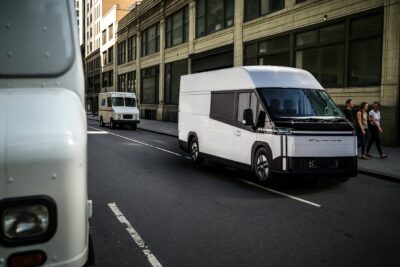

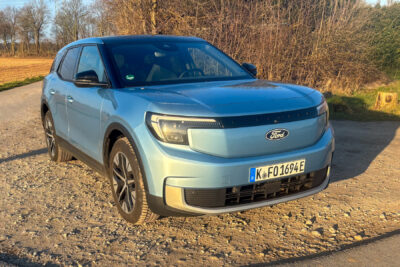
0 Comments